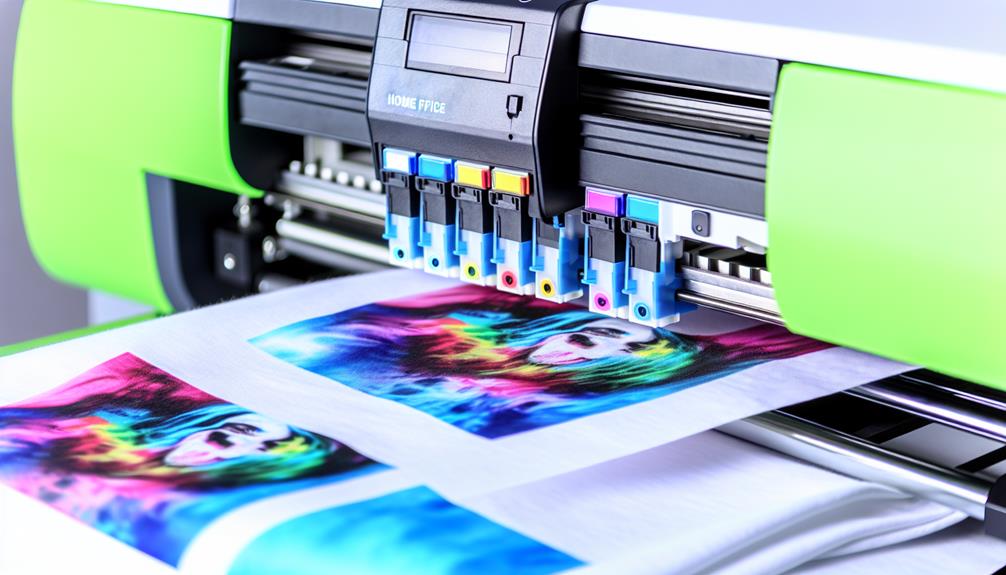
“Why Every Print Shop Should Invest in a Direct to Film Printer”
Introduction
In the fast-evolving world of printing technology, staying ahead of the curve is paramount for print shops DTF Transfers looking to thrive. Among the various innovations that have emerged recently, Direct to Film (DTF) printing stands out as a game-changer. This article delves deep into why every print shop should invest in a direct to film printer, exploring its benefits, processes, and the future it promises for businesses in this competitive industry. Get ready to unravel the potential of DTF printing!
What is Direct to Film Printing?
Understanding DTF Printing Technology
Direct to Film printing refers to a process that involves printing designs onto a special film, which is then transferred onto textiles using heat and pressure. This method is gaining popularity due to its versatility and quality.
The DTF Printing Process Explained
Advantages Over Other Methods
- Compared to traditional methods like screen printing or vinyl transfers, DTF offers greater detail, color vibrancy, and flexibility across various fabric types.
Why Every Print Shop Should Invest in a Direct to Film Printer
Investing in a direct-to-film printer can be transformative for print shops. Here’s why:
Enhanced Versatility and Flexibility
With DTF printing, you can print on various fabrics—cotton, polyester, blends—making it an ideal choice for diverse customer needs.
Cost Efficiency in Production
While initial costs may seem high, DTF printing significantly reduces material waste over time compared to other methods.
High-Quality Output
DTF prints are known for their exceptional color accuracy and durability; they resist fading even after multiple washes.
Faster Turnaround Times
The streamlined process of DTF allows for quicker production cycles, enabling print shops to meet tight deadlines without compromising quality.
The Best DTF Printers on the Market
When considering an investment in DTF technology, choosing the right printer is crucial. Here are some of the best options:
1. Epson SureColor F2100
- Known for its reliability and excellent print quality.
- User-friendly interface simplifies operation.
2. Mimaki JFX200-2513
- High-speed capabilities make it perfect for larger operations.
- Offers a wide range of media compatibility.
3. Roland VersaUV LEF Series
- Known for rich colors and fine detail handling.
- Ideal for small-batch production runs.
How DTF Transfers Work: A Step-by-Step Guide
Understanding how DTF transfers work can demystify this innovative technology:
Comparing DTF Printing with Other Techniques
To understand why investing in a direct-to-film printer makes sense, let’s compare it with other popular techniques like DTG (Direct-to-Garment) and screen printing:
| Feature | Direct-to-Film (DTF) | Direct-to-Garment (DTG) | Screen Printing | |--------------------------|----------------------|-------------------------|-------------------------| | Setup Costs | Moderate | High | Low | | Color Vibrancy | Excellent | Great | Good | | Fabric Compatibility | Broad | Limited | Limited | | Production Speed | Fast | Moderate | Slow | | Detail | High | Very High | Medium |
Common Applications of DTF Printing
From custom apparel to promotional items, here are common applications where DTF shines:
- T-Shirts & Apparel: Perfect for custom designs that last.
- Bags & Accessories: Versatile enough for various materials including leather.
- Home Decor: Cushions or wall hangings benefit from vivid prints.
Challenges and Solutions in DTF Printing
While there are many advantages, challenges do exist within DTF printing:
Durability Concerns
Although DTF prints are generally robust, improper application can lead to peeling or fading over time.
Solution: Follow manufacturer guidelines regarding temperature settings and curing times diligently.
Initial Investment
The cost of purchasing equipment can be daunting at first glance.
Solution: Consider financing options or start with smaller models before scaling up your operations.
Tips for Successful DTF Printing Operations
Having invested in a direct-to-film printer means ensuring you maximize its potential:
Frequently Asked Questions about Direct-to-Film Printers
1. What materials can be used with DTF printing?
Answer: You can use cotton, polyester DTF Printing blends, denim, leather – virtually any type of fabric!
2. How long do DTF prints last?
Answer: With proper care—like washing inside out—the prints can last several years before showing signs of wear.
3. Is training required for operating a direct-to-film printer?
Answer: Basic knowledge of printers helps but formal training provided by manufacturers can enhance productivity significantly.
4. How does cost compare between DTG and DTF?
Answer: Typically lower initial investment with ongoing costs more favorable than DTG due to less waste in material usage; however exact costs depend on volume produced.
5. Can I create multi-color designs easily?
Answer: Absolutely! One of the significant advantages of DTF is its ability to produce vibrant multi-color designs without additional setup costs typical with screen printing methods.
Conclusion
In conclusion, investing in a direct-to-film printer presents exciting opportunities that allow print shops not only to enhance their product offerings but also streamline operations while providing high-quality outputs that customers desire today more than ever before — whether it's custom t-shirts or unique home decor items! Embrace this cutting-edge technology now so you don’t get left behind as competitors adapt too! Equip yourself with knowledge about "Why Every Print Shop Should Invest in a Direct to Film Printer" today!
This comprehensive guide aims at establishing authority while providing clear insights into why every print shop should consider adding these innovative printers into their arsenal! With all these factors combined - from enhanced versatility through cost efficiency - there's little doubt remaining about their potential impact upon businesses around us today!